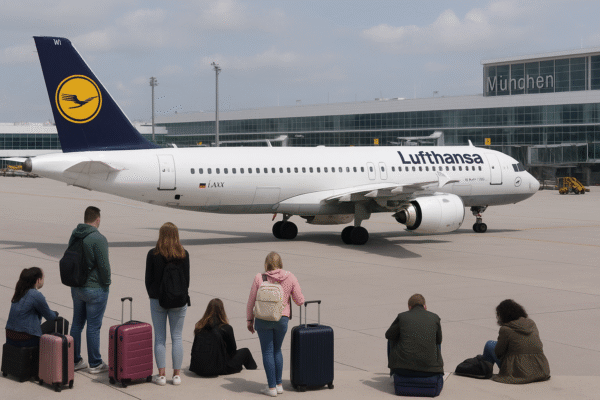In 2024, global tourism has returned with unprecedented force. Countries such as The Bahamas, Vatican City, Andorra, and San Marino are seeing massive increases in international visitors, presenting new challenges for local infrastructure, sustainability, and the overall visitor experience.
According to recent studies comparing international arrival numbers to resident populations, smaller destinations are now under immense pressure. These surges may boost economies, but they also highlight the fragility of popular yet limited spaces.
Vatican City: The World’s Most Visited Tiny Nation
Vatican City, the spiritual and cultural center of Catholicism, recorded approximately 7,709 visitors for every resident in 2024. With a population of under 1,000 and an area of just 0.49 square kilometers, the influx creates logistical and preservation concerns.
Key attractions like St. Peter’s Basilica, the Vatican Museums, and the Sistine Chapel continue to draw millions, but the constant stream of tourists has raised red flags about conservation and crowd control. Tourists are encouraged to book guided tours, visit during shoulder seasons (March-April and October-November), and seek early-morning or late-afternoon entry slots to avoid peak congestion.
Andorra: Alpine Allure Meets Tourist Overload
The microstate of Andorra, nestled in the Pyrenees between France and Spain, hosted nearly 10 million visitors in 2024—over 120 tourists for every resident. Famed for its ski resorts, hiking trails, and duty-free shopping, Andorra struggles with seasonal bottlenecks, especially in winter and summer.
Smart travelers are now opting for off-peak months like April and October, enjoying scenic drives and tranquil mountain towns without the traffic jams and crowded slopes. Local tourism boards are working on spreading tourist footfall across lesser-known villages to alleviate pressure on the capital and major resorts.
San Marino: Medieval Charm Meets Modern Pressures
San Marino, surrounded entirely by Italy, saw a surge in tourism thanks to its preserved medieval architecture and breathtaking vistas. While total arrivals are fewer than Andorra or the Bahamas, the country’s small size (61 square kilometers) and modest population (around 34,000) mean even moderate influxes strain resources.
Local authorities are introducing measures to manage peak-hour foot traffic, and visitors are advised to explore outside standard hours. Early-morning walks and evening visits to landmarks like the Three Towers of San Marino offer better experiences while supporting sustainable travel goals.
The Bahamas: Cruise Tourism Booms Beyond Capacity
The Bahamas remains a premier Caribbean destination but faces growing overtourism issues, especially in Nassau and Freeport. With cruise ships arriving daily, local populations can temporarily double in size, creating stress on public services and the environment.
While tourism contributes nearly 50% of the country’s GDP, environmentalists warn of irreversible damage to coral reefs and marine ecosystems due to mass tourism. Eco-conscious travelers are advised to support green-certified resorts, explore outer islands, and book smaller group tours to reduce their footprint.
Saint Kitts and Nevis: Small Islands, Big Impact
Another Caribbean nation feeling the heat is Saint Kitts and Nevis. With just over 50,000 residents, the islands welcomed a disproportionate number of cruise passengers in 2024. Downtown Basseterre and the port area regularly experience congestion.
Local authorities are encouraging cruise lines to stagger arrivals and limit passenger volumes to help ease infrastructure strain. Land-based tourism and extended stays are being promoted to help diversify the visitor profile.
Travel Timing is Key to Sustainable Exploration
What unites these destinations is the urgent need for balance. They are among the most picturesque places on Earth—but their charm is directly tied to their small scale and fragile ecosystems. As global travel rebounds, travelers must adopt smarter habits.
Tips for Sustainable Travel in High-Density Destinations:
- Travel during shoulder seasons to avoid peak crowd levels.
- Book accommodations with sustainability certifications.
- Respect local customs and follow visitor guidelines.
- Explore lesser-known attractions to spread tourism impact.
- Support local businesses rather than global chains.
A Call for Responsible Tourism in 2024
As tourism continues to recover and grow, the impact on smaller nations cannot be ignored. Destinations like Vatican City, Andorra, San Marino, and The Bahamas are now case studies in the double-edged sword of popularity.
By rethinking travel timing, choosing ethical tour operators, and staying informed, tourists can help ensure these stunning destinations remain welcoming and preserved for future generations.
For the latest updates on sustainable tourism policies, visit official government tourism portals or trusted sources like the UN World Tourism Organization (UNWTO).
In 2024, travel is not just about the destination—it’s about how you arrive, when you arrive, and the impact you leave behind.
For more travel news like this, keep reading Global Travel Wire

















